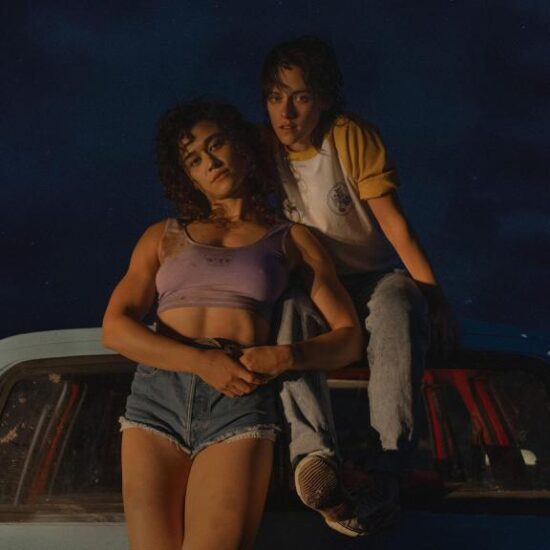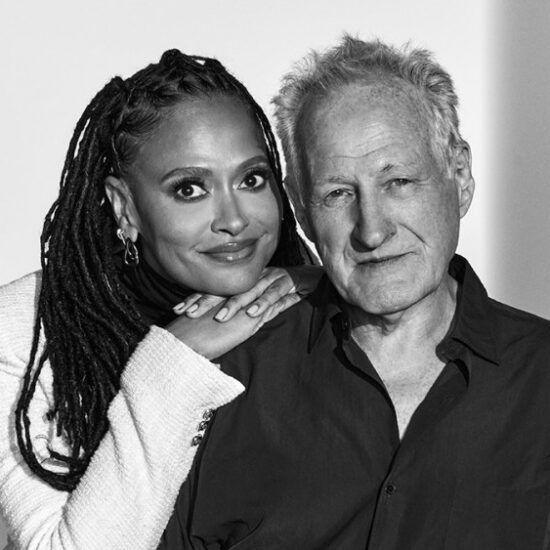
Shi tells IndieWire how she paved the way as a female visionary at Pixar with her Oscar contender.
Everything changed for director Domee Shi at Pixar in 2022. She released her first feature, “Turning Red,” the semi-autobiographical, coming-of-age comedy that’s an Oscar contender for Best Animated Feature. She was also promoted to creative vice president at the studio, becoming the first woman director to join Pixar’s vaunted Braintrust.
It’s all part of the new culture of female empowerment, diversity, and personal storytelling at the studio, led by chief creative officer Pete Docter. Docter mentored Shi as a story artist on “Inside Out” and then on her appetizing, Oscar-winning short “Bao.” That paid dividends when he greenlit “Turning Red” and entrusted Shi as sole director. Her quirky tale of dorky 13-year-old Mei (Rosalie Chiang), who transforms into a giant red panda when she hits puberty, contains an artistic vision and controlled chaos uncharacteristic of a first-time director.
“What I learned from Pete working with him on ‘Inside Out’ and watching him direct ‘Soul,’” Shi told IndieWire, “was that there is a reason why everything is designed in a particular style, but that it always comes down to character and an emotional place. And that was the same for our movie, too. We really wanted this chunky, cute, handmade quality to this world of Toronto because we wanted it to feel real. And to do that we had to include all the imperfections we see in reality. If you look closely at our sets, there isn’t a single wall or beam that has a perfectly straight line. We have artists adding nicks to the corners. It’s a tactile world that these characters are living in.”
The challenge was telling the story of being a Chinese Canadian tween in the early ’00s with a cohesive visual style that represented Shi’s love of drawing, anime, boy bands, Disney, French comics, and Edgar Wright movies. “I think a lot of great films should come from a personal place for the filmmaker: an experience and memory and emotion,” she said. “And I just wanted to tap into what it was like for me and for a lot of people when they woke up one day and didn’t recognize their body or their emotions or why they went from hating their mom one second and then worshiping them the next. Film and art and drawing has always been a way of processing and working out my own feelings. And this film was also a way of helping others who are having issues with their parents or their kids.”

“Turning Red”
Walt Disney Studio Motion Pictures / Courtesy Everett Collection
Yet coming up with the shape language, color palette, and lighting for “Turning Red” was a brand new stylistic path for Pixar. Shi and her all-women supervisory team practically turned the studio upside down with their 2D anime vibe to help the viewer becoming one with Mei in every scene. “Pete kept saying it’s cool that you’re pushing color,” she said. “It’s awesome that you’re pushing expression. But how is that helping you tell Mei’s story? And so we had that in the back of our minds, even when we were lighting a shot. What if she’s really terrified and embarrassed? Let’s totally push the background to complete black, drop a spotlight on her, light an eerie green light from below, and put the audience in her shoes.”
One of the best set pieces, in which Mei — in giant red panda form — flees from her mom through the streets of Toronto, was also the most autobiographical. “That scene where Mei spots her mom watching her from behind a tree was inspired by real life on my first day at school,” said Shi. “I had walked out of the school, I had made some new friends, and then one of them taps me on the shoulder and goes, ‘Who’s that lady hiding behind a tree?’ And it’s my mother, who has sunglasses on. Like I wouldn’t recognize her. She said she was worried about me. I did not explode into a giant red panda but I wanted to in that moment.”
Up until that point in the film, Mei is able to hold it together and control her emotional outburst. But this is the chaotic turning point that enabled Shi to demonstrate how destructive Mei is while showcasing the beauty of Toronto’s Chinatown. “She’s big and hairy and has to squeeze her way through alleyways,” Shi said. “It was a fun, heightened, exaggerated moment when you get your period and you’re freaking out. She feels like an alien in her body.
“And also I wanted to show how protective Ming is. I love that scene where Ming sees Mei running on the rooftop and, without even missing a beat, she takes off her heels and slides across the car because her baby’s in trouble and she has to help her no matter what.”

“Turning Red”
Disney/Pixar
Finding closure between mother and daughter, though, proved challenging. In the end, Shi and team came up with a beautifully magical and intimate scene in the astral plane, where Mei reconciles with the 13-year-old version of Ming. “Really, it just came from asking ourselves: ‘Where did the red panda come from?’ ‘Where do they go when they pass on or go through their ritual to get rid of their panda?,’” Shi said. “We created this bamboo forest, which made sense since pandas eat bamboo. It was a lush meditative place for Mei and her mother to finally express their feelings for each other.”
Interestingly, the metaphor for the giant red panda shifted by the end of the four-year production. It wasn’t just about puberty but also Shi’s Chinese cultural heritage.”It’s about this family and the gift that the women have inherited through many generations,” she said. “It was considered empowerment, but, once you moved to a new country in the modern world, this gift was now considered strange and odd and destructive. It was a monster and you have to get rid of it. And it was important to show that Mei was the first in her family to embrace the panda and that we’re not passing judgment on her.”
Shi is currently writing her next animated feature; like “Turning Red,” it’s a personal tale inspired by her Chinese heritage — including the aesthetic, which will be a new stylistic adventure as well. “It’s early on,” Shi said. “I mostly just go by what’s an interesting story. I’m leaning toward whatever emotion is resonating with me right now. And I want to do something that explores creativity. I’m not sure where the world is set or what time period it is. I’m just following what I’m excited about and what I haven’t seen yet in feature animation in the West.”

“Turning Red”
PIXAR
Meanwhile, working on the expanded creative development team (a.k.a. the Braintrust) has allowed Shi to help guide a more diverse and inclusive generation of Pixar filmmakers. This inner circle, led by Docter, also includes Pixar president Jim Morris, “Turning Red” producer and senior vice president of development Lindsey Collins, and directors Peter Sohn (this year’s “Elemental”), and Dan Scanlon (“Onward”).
“I feel like my duty and responsibility is to pay forward the help and trust that I’ve gotten throughout my career at Pixar,” she said,” and help the next generation navigate their way through Pixar to tell their stories, and preserve all the authenticity and uniqueness and weirdness of their ideas.”
Sign Up: Stay on top of the latest breaking film and TV news! Sign up for our Email Newsletters here.














